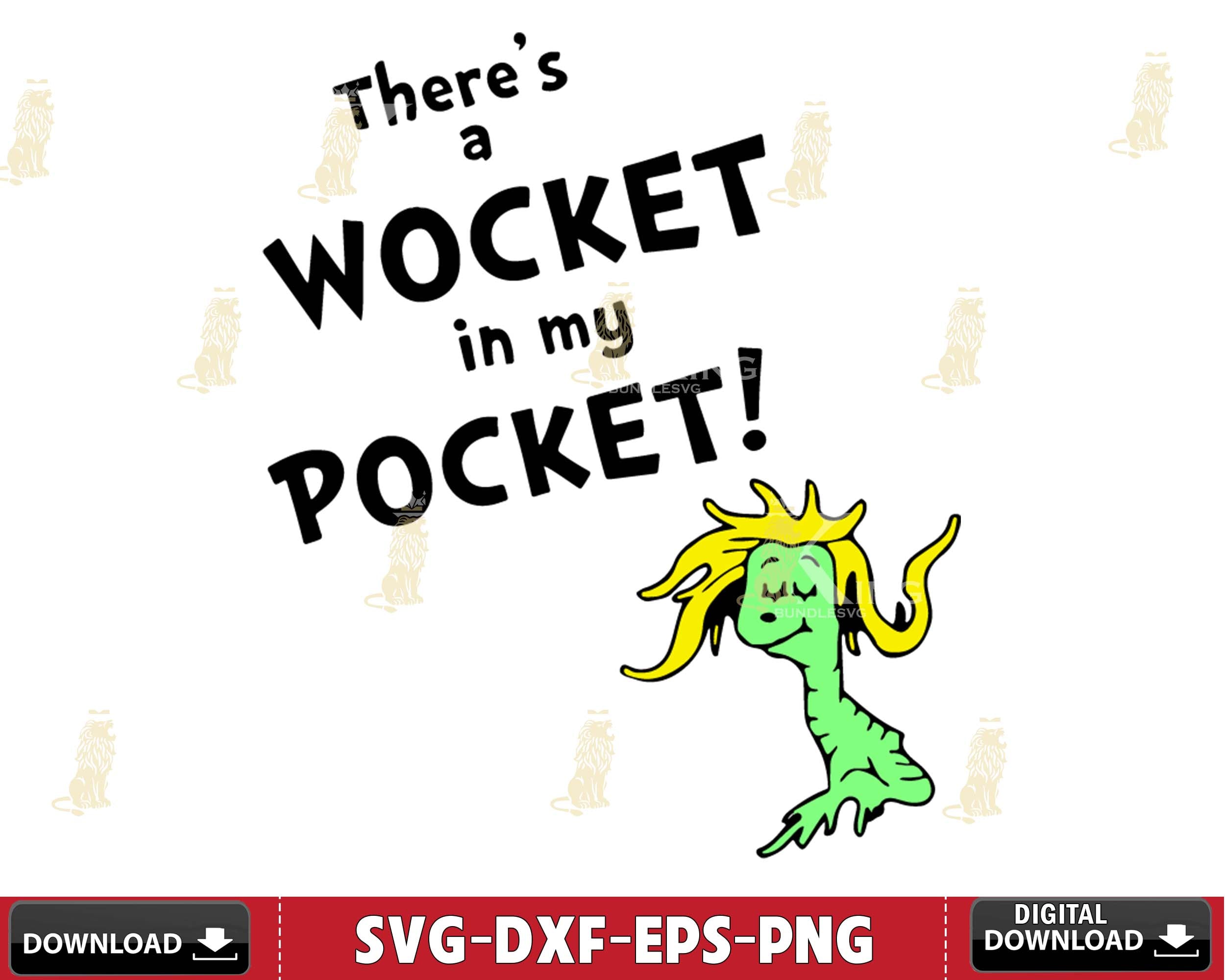There’s a wocket in my pocket

There’s a wocket in my pocket is an enchanting phrase that evokes images of whimsy and imagination. It comes from the beloved children’s book written by Dr. Seuss, which explores the idea of fantastical creatures hiding in unexpected places. This playful tale has captured the hearts of children and adults alike, manifesting themes of curiosity and wonder that resonate universally. As we delve into the world of wockets and their charming companions, we’ll explore the broader implications of this whimsical narrative.
The Whimsical World of Dr. Seuss
Dr. Seuss, born Theodor Seuss Geisel, was a master of storytelling, particularly for children. His unique style combined imaginative characters with rhythmic prose that has become synonymous with childhood literature.
The Origin of Dr. Seuss’s Imagination

Dr. Seuss began his career as a cartoonist and illustrator, transitioning into children’s literature with his first book, “And to Think That I Saw It on Mulberry Street.” The success of this book paved the way for more creations filled with lively illustrations and engaging narratives.
His writing style often includes nonsense words, such as “wocket,” creating an immersive experience for readers. These made-up terms spark curiosity and encourage young readers to stretch their imaginations. The imaginative worlds he built were not merely absurd; they cleverly encouraged learning through rhyme and rhythm.
Themes and Messages in Dr. Seuss’s Work

Central to many of Dr. Seuss’s stories is the idea of acceptance and embracing differences. In “There’s a Wocket in My Pocket,” readers encounter various quirky creatures, suggesting that diversity enriches our lives. Through colorful illustrations and engaging narratives, he teaches young audiences the value of friendship and understanding.
The playful nature of his work also invites laughter and joy, reinforcing that reading can be a fun activity. By incorporating lessons subtly within engaging tales, Dr. Seuss helped promote literacy among children, making them excited about books.
Impact on Children’s Literature
Dr. Seuss’s influence stretches far beyond his own books. He revolutionized children’s literature by introducing inventive language and creative illustrations. His works continue to inspire authors and illustrators, encouraging them to craft stories that combine fantasy with educational themes.
In classrooms around the world, Dr. Seuss’s books are utilized to teach phonics, vocabulary, and the joy of reading. The phrases like “there’s a wocket in my pocket” serve as memorable hooks for young minds, encouraging them to explore language in a fun, relaxed environment.
The Magic of Imagination

Imagination is a powerful tool for children and adults alike. The phrase “there’s a wocket in my pocket” reflects the boundless creativity that resides in every individual, especially when they are young.
The Role of Imagination in Childhood Development
Imagination plays a crucial role in childhood development. Engaging in imaginative play helps children develop cognitive skills, enhance problem-solving abilities, and improve social interactions. When children create imaginary friends or scenarios, they nurture their creative thinking and emotional intelligence.
Through imaginative storytelling, children learn to express themselves and navigate complex emotions. They gain confidence in their ability to create narratives, which subsequently translates into improved communication skills. Thus, the whimsical idea of a wocket nestled in one’s pocket signifies more than mere fun; it represents a vital aspect of growth and exploration in youth.
Encouraging Creativity Through Play

Encouraging creativity in children can take many forms. Parents and educators can foster an environment where imagination thrives through various activities. Reading diverse stories, engaging in arts and crafts, or even providing simple props for pretend play can stimulate their creative juices.
The concept of a wocket in one’s pocket can be transformed into games, where children invent their versions of wockets or other creatures. This fosters collaborative play, reinforcing communication skills and teamwork while emphasizing the beauty of creativity.
Imaginative Worlds in Everyday Life
The power of imagination doesn’t fade as we age; rather, it transforms. Adults can harness their inner child by recognizing that the mundane can also be magical. Opportunities to sprinkle imagination into daily routines are abundant, from crafting unique stories during family outings to visualizing aspirational goals.
Embracing an imaginative approach can lead to innovative solutions in professional settings. When teams brainstorm creatively, ideas flourish, leading to groundbreaking advancements. Thus, even as we grow, allowing ourselves to entertain the notion of a “wocket” can unlock new potentials in both personal and professional spheres.
The Importance of Stories in Shaping Minds

Stories have always held a significant place in human culture. From oral traditions to contemporary literature, storytelling continues to shape thoughts, beliefs, and values.
Storytelling as a Cultural Bridge
Storytelling acts as a cultural bridge, connecting generations and communities. Through tales like “There’s a Wocket in My Pocket,” individuals share experiences that resonate across societal divides. Each story carries cultural nuances while still appealing to our shared humanity.
For children, hearing stories helps them develop empathy and understand different perspectives. As they journey through various narratives, they learn to relate to characters who might be vastly different from themselves—whether they are creatures like wockets, humans, or even monsters.
The Educational Value of Storytelling
Educators recognize the essential role storytelling plays in teaching. Leveraging narratives engages students’ attention, making learning enjoyable and effective. Lessons entwined with stories, especially those rich in imagination, allow for deeper understanding and retention of information.
Incorporating elements like rhymes and rhythms, as seen in Dr. Seuss’s writings, enhances phonemic awareness and language development. Storytelling cultivates an appreciation for language and literature, inspiring future generations of readers and writers.
Personal Connection to Storytelling
As readers, we form personal connections with stories that resonate with us. The element of surprise and delight in discovering characters like wockets stirs nostalgia and fond memories of childhood adventures.
Reflecting on our favorite stories allows us to revisit the innocence of youth and reignite our passion for creativity. Participating in storytelling—whether through reading to children or sharing our experiences—helps perpetuate the magic of stories and their impact on lives.
FAQs
What does “there’s a wocket in my pocket” mean?
The phrase “there’s a wocket in my pocket” originates from Dr. Seuss’s children’s book of the same name. It captures the essence of playful imagination, suggesting that whimsical creatures could be hiding in unexpected places.
Why is Dr. Seuss’s work so popular?
Dr. Seuss’s work is popular because it combines engaging narratives with imaginative characters, rhythm, and rhyme. His ability to weave important life lessons into entertaining stories resonates with both children and adults.
How can I promote creativity in my child?
Promoting creativity can involve reading diverse stories, engaging in arts and crafts, and encouraging imaginative play. Providing opportunities for unstructured play and exploration nurtures your child’s creative instincts.
What is the significance of imaginative play in childhood?
Imaginative play is vital for cognitive, social, and emotional development. It enhances problem-solving skills, boosts communication abilities, and allows children to navigate complex feelings through storytelling.
How do stories shape our understanding of the world?
Stories shape our understanding of the world by providing different perspectives and cultural insights. They foster empathy and connection between people, helping us appreciate diversity and shared experiences.
Video
Conclusion
There’s a wocket in my pocket serves as more than just a catchy phrase from a whimsical children’s book; it opens doors to discussions about creativity, storytelling, and the rich tapestry of childhood imagination. Dr. Seuss’s enduring legacy highlights the importance of embracing fantasy and nurturing creativity, reminding us that imagination can thrive at any age.
As we reflect on the playful worlds crafted by Seuss and others, we are reminded that these narratives offer vital lessons about acceptance, curiosity, and the beauty of diversity. So, whether you’re reading to a child, revisiting old favorites, or simply letting your imagination roam free, remember: there is always a wocket waiting to be discovered in your pocket!








